Three graduating artists show their unique art at Fayerweather Hall.
Haunting photos and text inspired by an African American servant from centuries back. Rugged handmade paper ethereally suspended by a mesh of threads. Evocative woodcut portraits of one artist’s family. Each was on display at this year’s Studio Honors Exhibition, thanks to three student-artists: Jonathan Jackson ’19, Mika Obayashi ’19 and Joanna Booth ’19.
Their group show, at the Eli Marsh Gallery in Fayerweather Hall, is up until May 26. It will be open through Commencement weekend. These photos give a sense of the show’s resonance.
Ichi-go ichi-e, by Mika Obayashi ’19
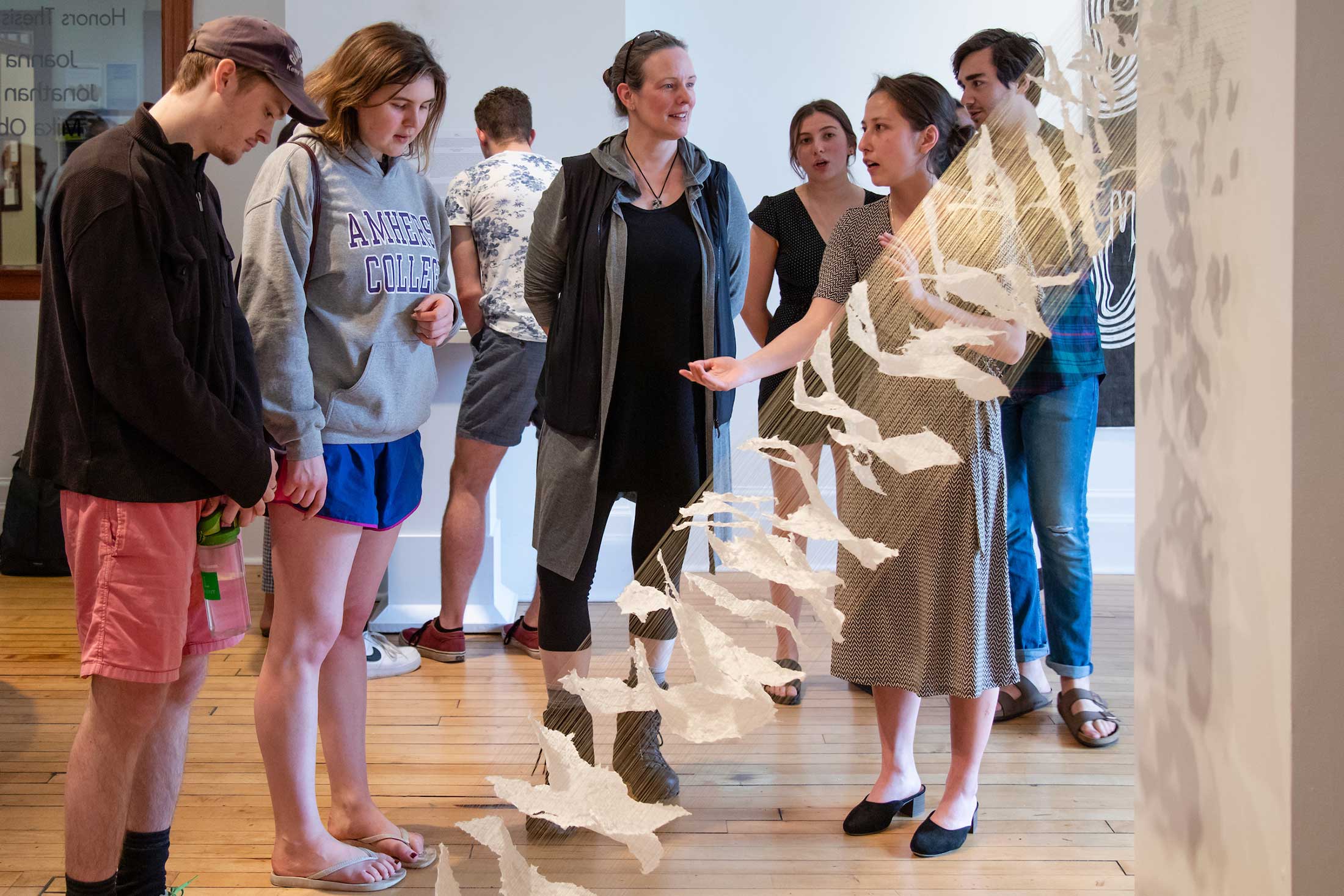
Ichi-go ichi-e is the title of the exhibit by Mika Obayashi ’19. It “is a Japanese expression that translates to ‘one time, one meeting,’ and is used to capture the fleeting and unrepeatable nature of moments in time,” she writes in her artist’s statement. “In the same way, the sculptures in this room are gathered for a singular, transient encounter.” Here, Obayashi (wearing a dress) is shown at the exhibition’s opening reception. She stands next to her work “The Distance of the Moon,” made of abaca paper, thread and pins.
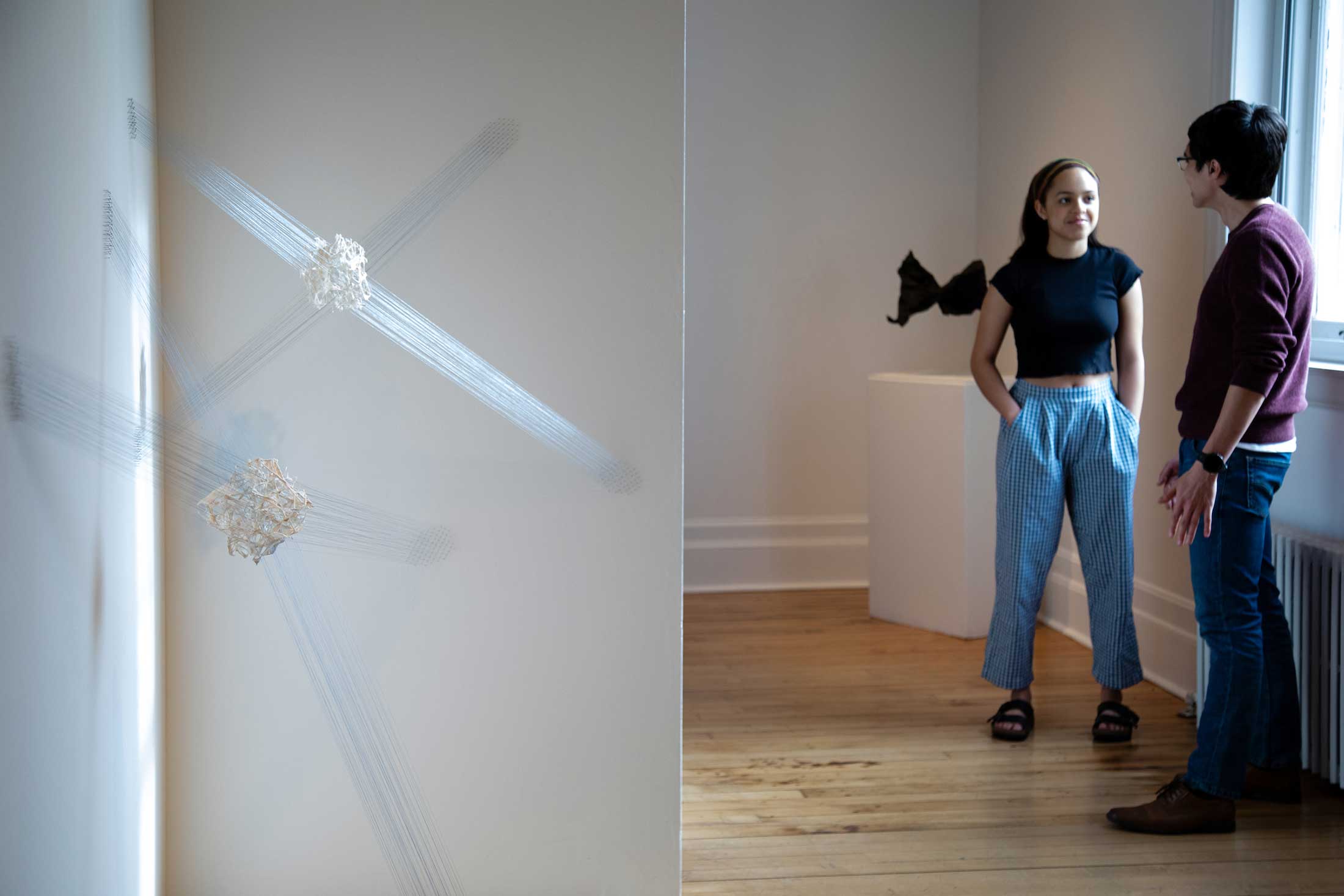
Visitors linger between the dark-colored “A Cool Breeze in Total Darkness” (abaca paper dyed with sumi ink, thread, pins) and the light-colored “X-pieces” (kozo paper pulp, string, thread, pins). “A sheet of paper can never rip in the same way twice,” writes Obayashi. “The unpredictability of paper is interrupted with contrastive rigid structures such as grids and parallel lines.”
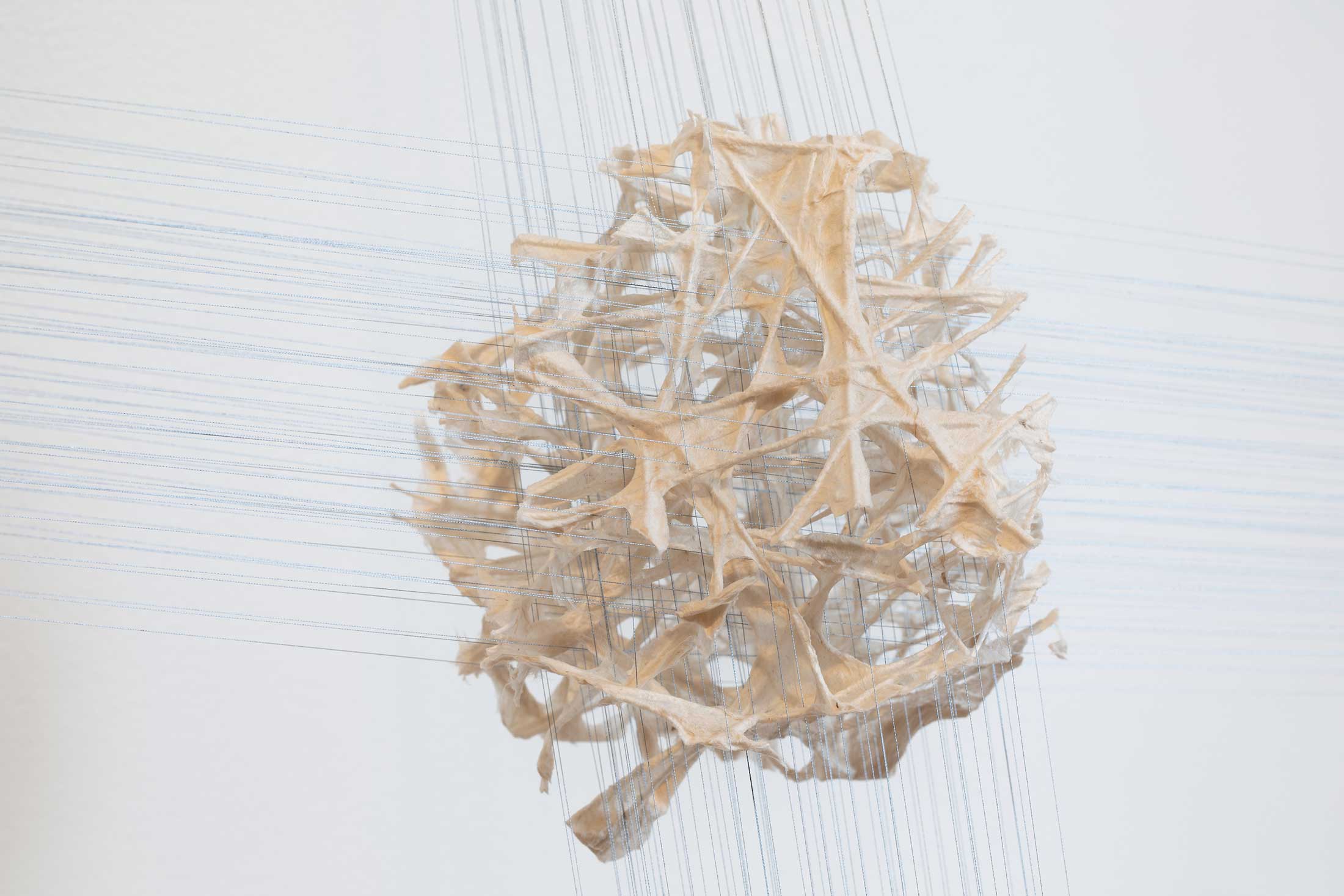
Obayashi gained interest in paper-making while studying in Japan. “Handmade paper, one of the primary materials in these works, possesses certain material qualities that are uncontrollable and unpredictable. … As paper pulp dries, it takes on a form of its own.” Shown here: a detail of “X-pieces.”
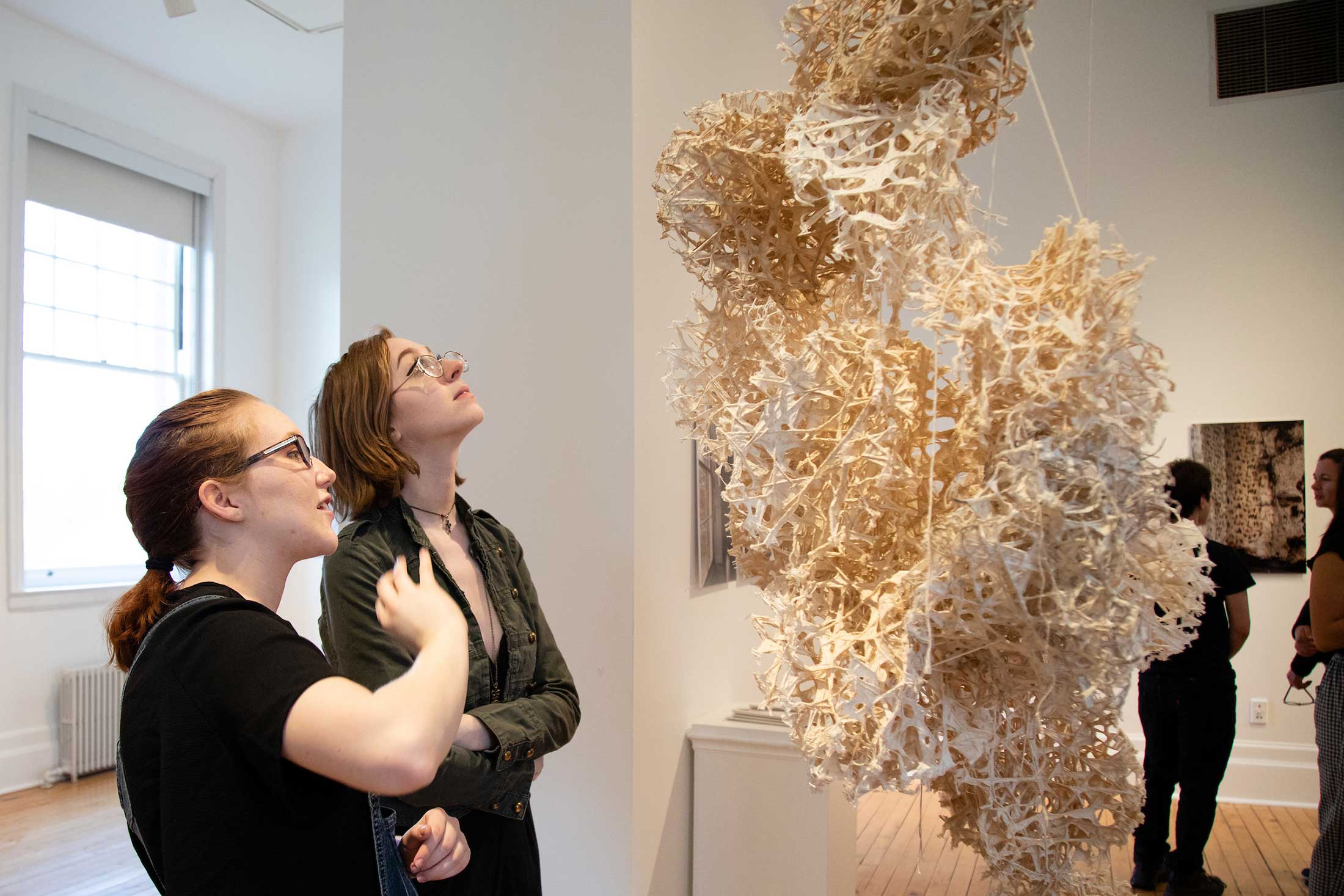
In tea ceremonies, Obayashi writes, “guests pause and acknowledge that this moment in time—in the long history of tea, humanity, rituals and the world—is insignificant, yet imbued with profound beauty.” Shown here: “Rhizome,” made of kozo paper pulp, string.
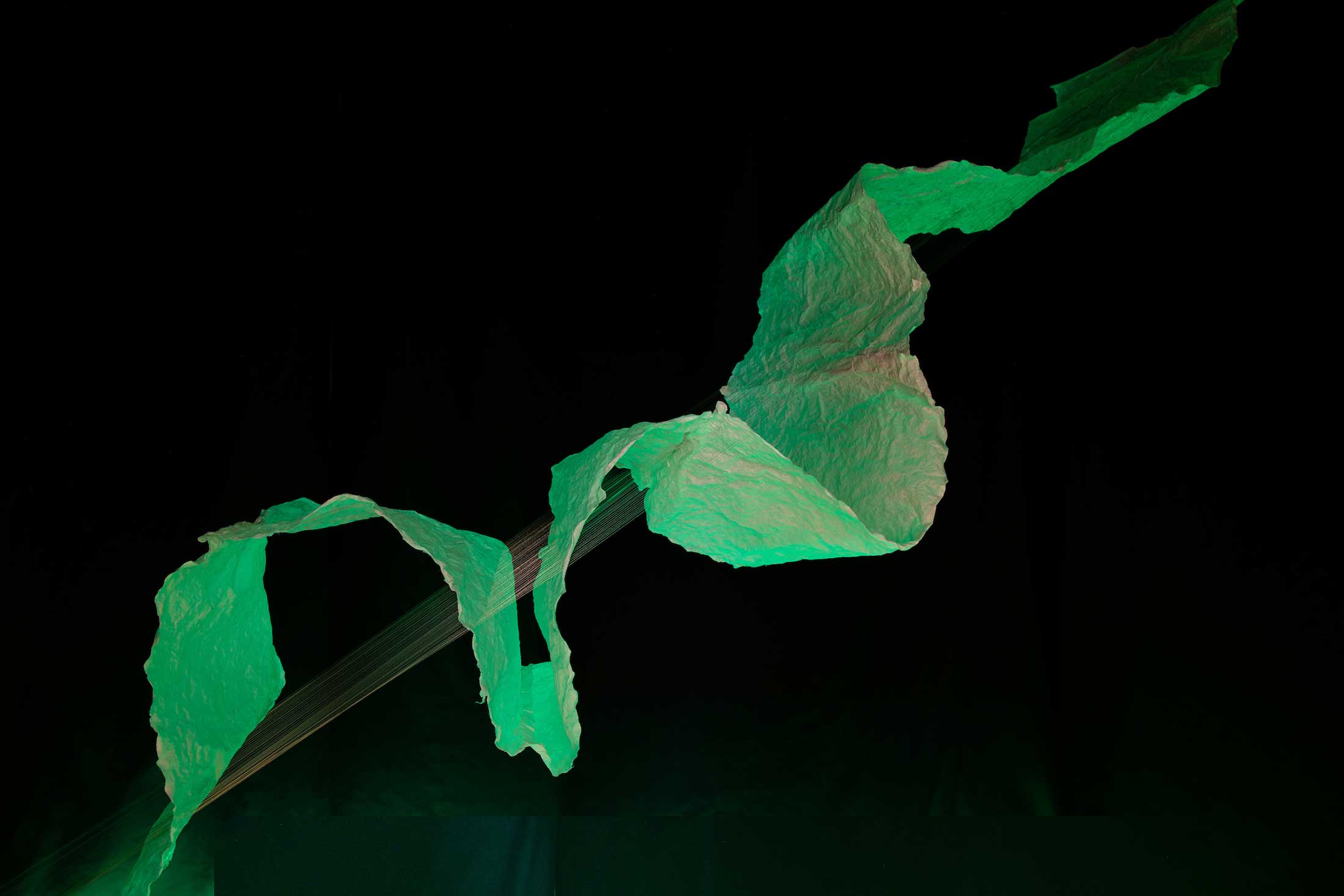
Shown here: “Waveform,” constructed of abaca paper, thread and nails. The work is displayed in a small dark room, with ambient tinted light. “The grids and parallel lines of thread are a means of installation as well as an infrastructure on which paper is able to expand as a three-dimensional object,” writes Obayashi.
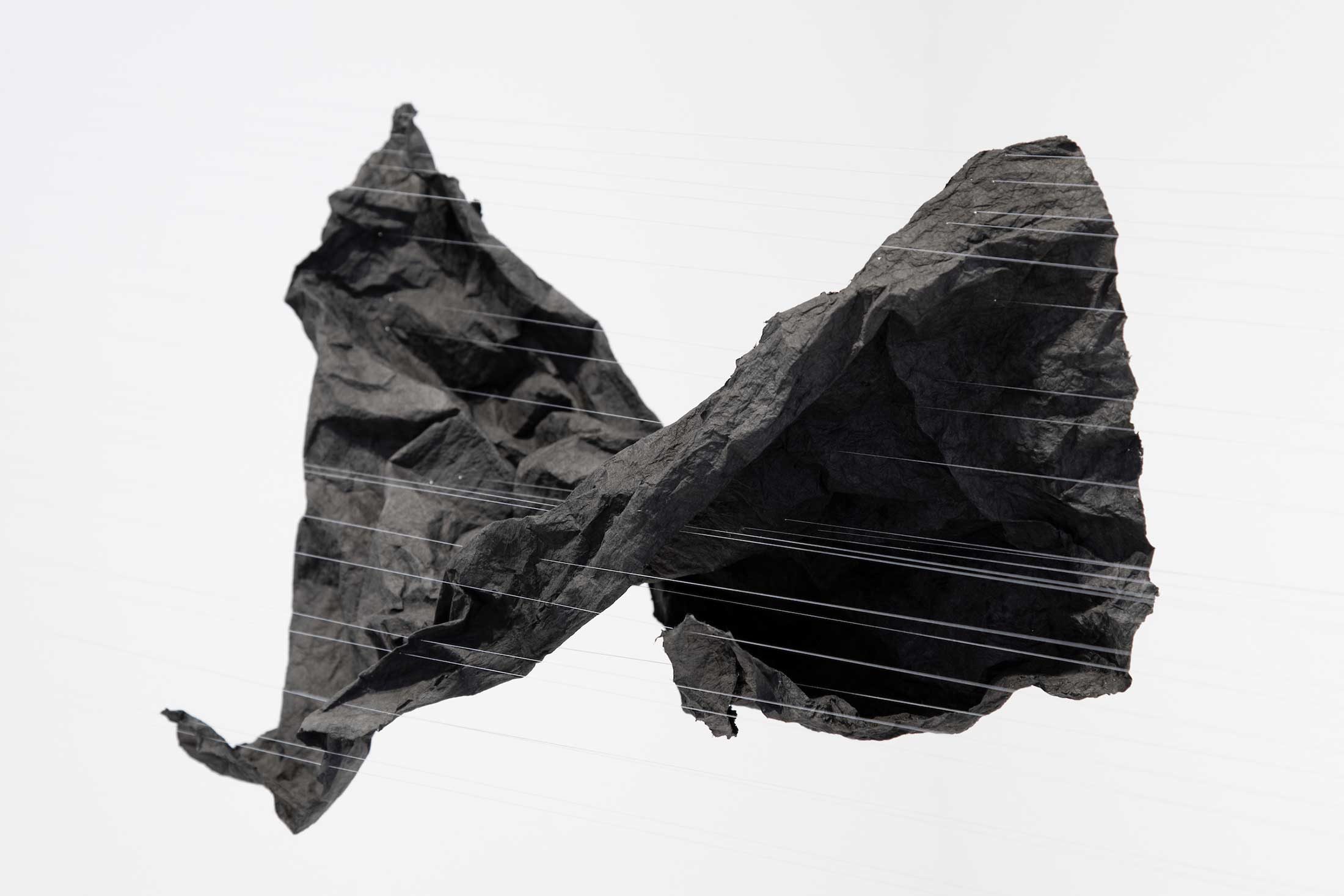
“I invite you to embrace this unique meeting of materials deliberately and with full awareness of their temporality,” writes Obayashi. Shown here: A detail of “A Cool Breeze in Total Darkness.”
The House Servant’s Directory, by Jonathan Jackson ’19
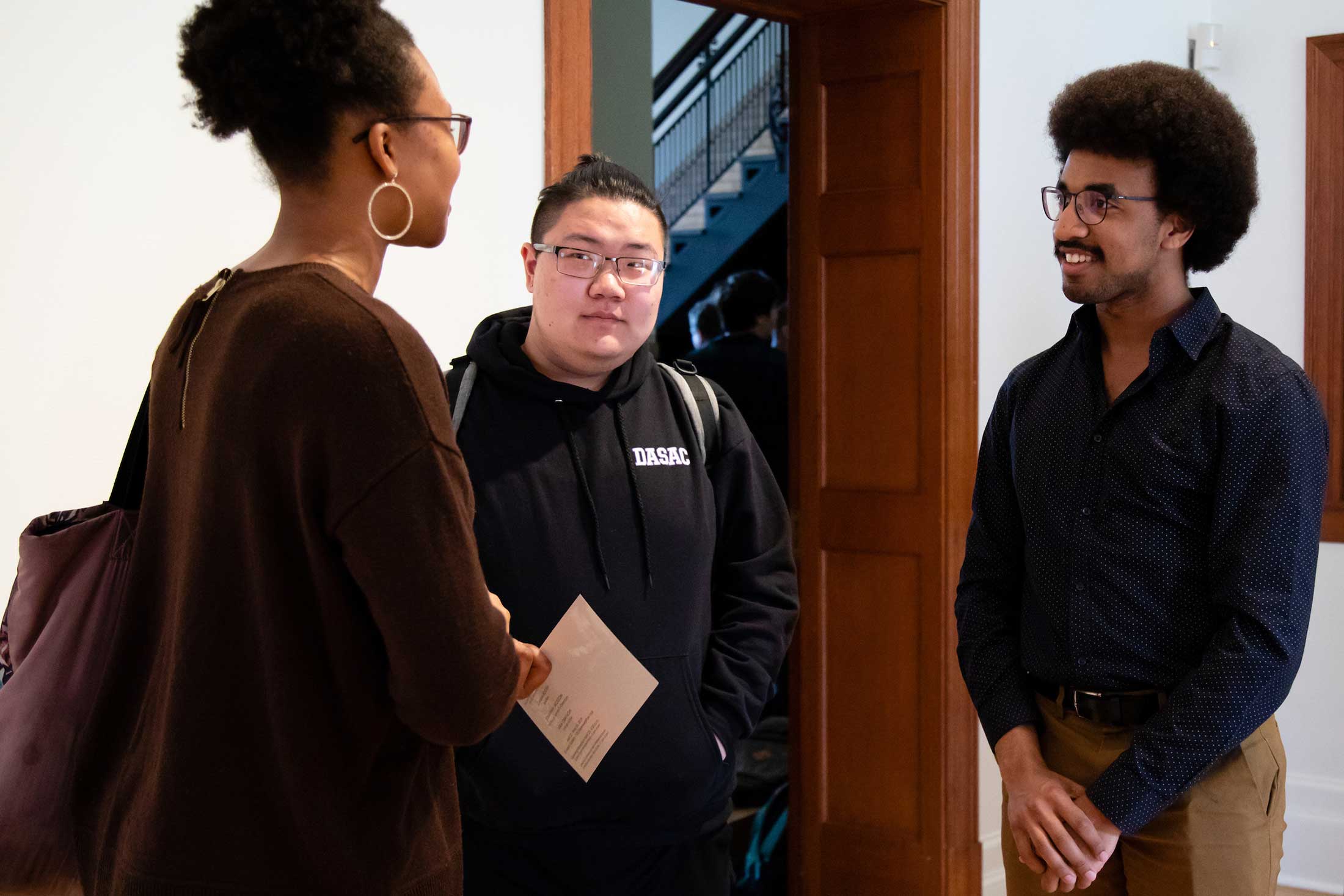
Jonathan Jackson ’19 (right) at the reception which includes his exhibit, titled The House Servant’s Directory. Jackson is influenced by this eponymous guide, published in 1827, plus his own inquiry into the experience of his fifth great-grandfather, Robert Roberts. Roberts was employed in the home of Federalist politician Christopher Gore, in Waltham, Mass.
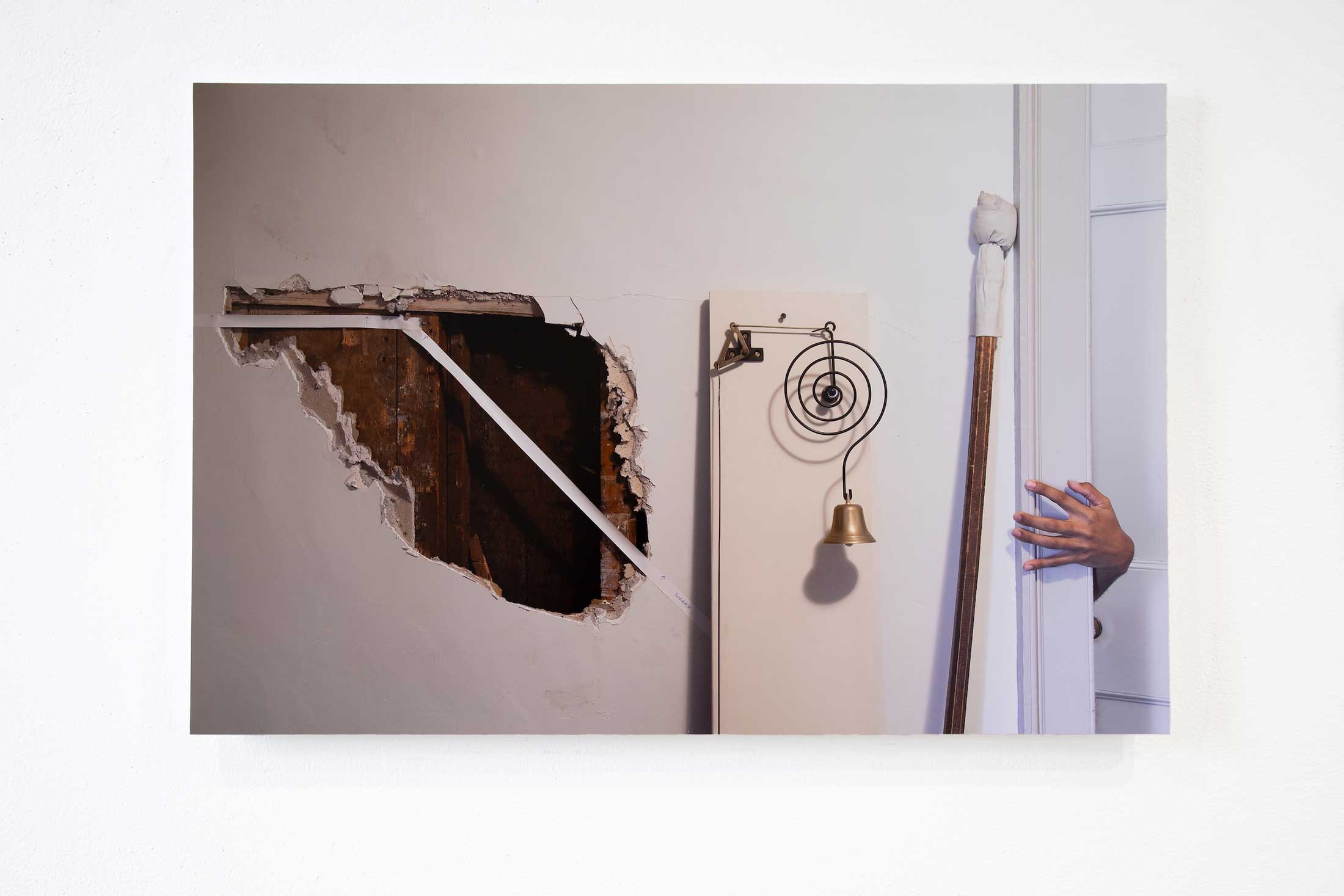
At Gore Place, now a museum, Jackson created a series of “images that visualize Robert Roberts and the history of domestic service in the United States,” as he wrote in his artist’s statement, and also to “call attention to the efforts of peoples within the African diaspora to either retain or dismiss a cultural identity.” In certain images, Jackson inserts himself. Shown here: “Tools.”
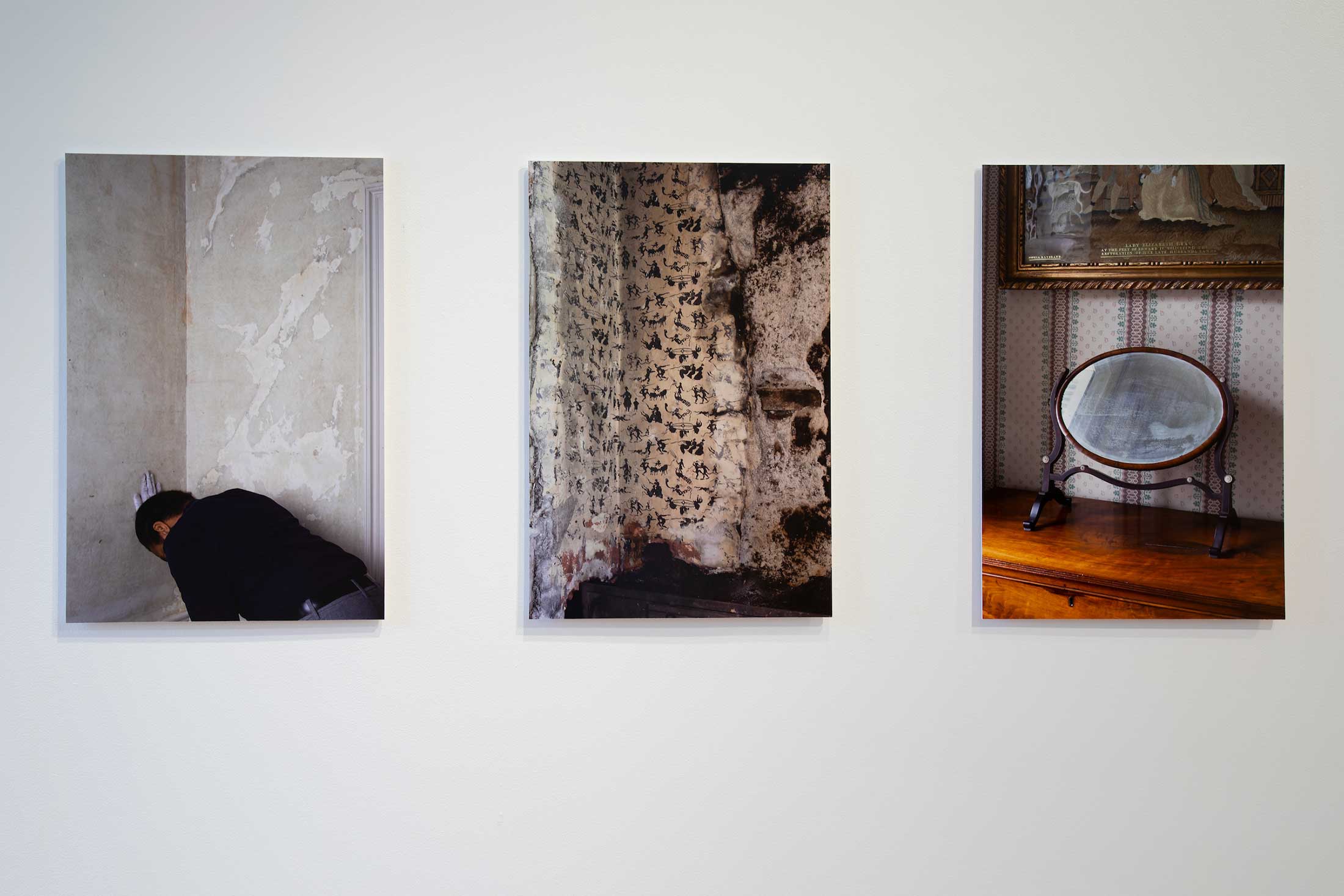
Jackson’s exhibit also features his accompanying booklet, called Interruptions. It includes text from The House Servant’s Directory plus five pieces of Jackson’s own writing. Images shown here, left to right: “Sinking,” “Devils,” “Lady’s Breakfast Room.”
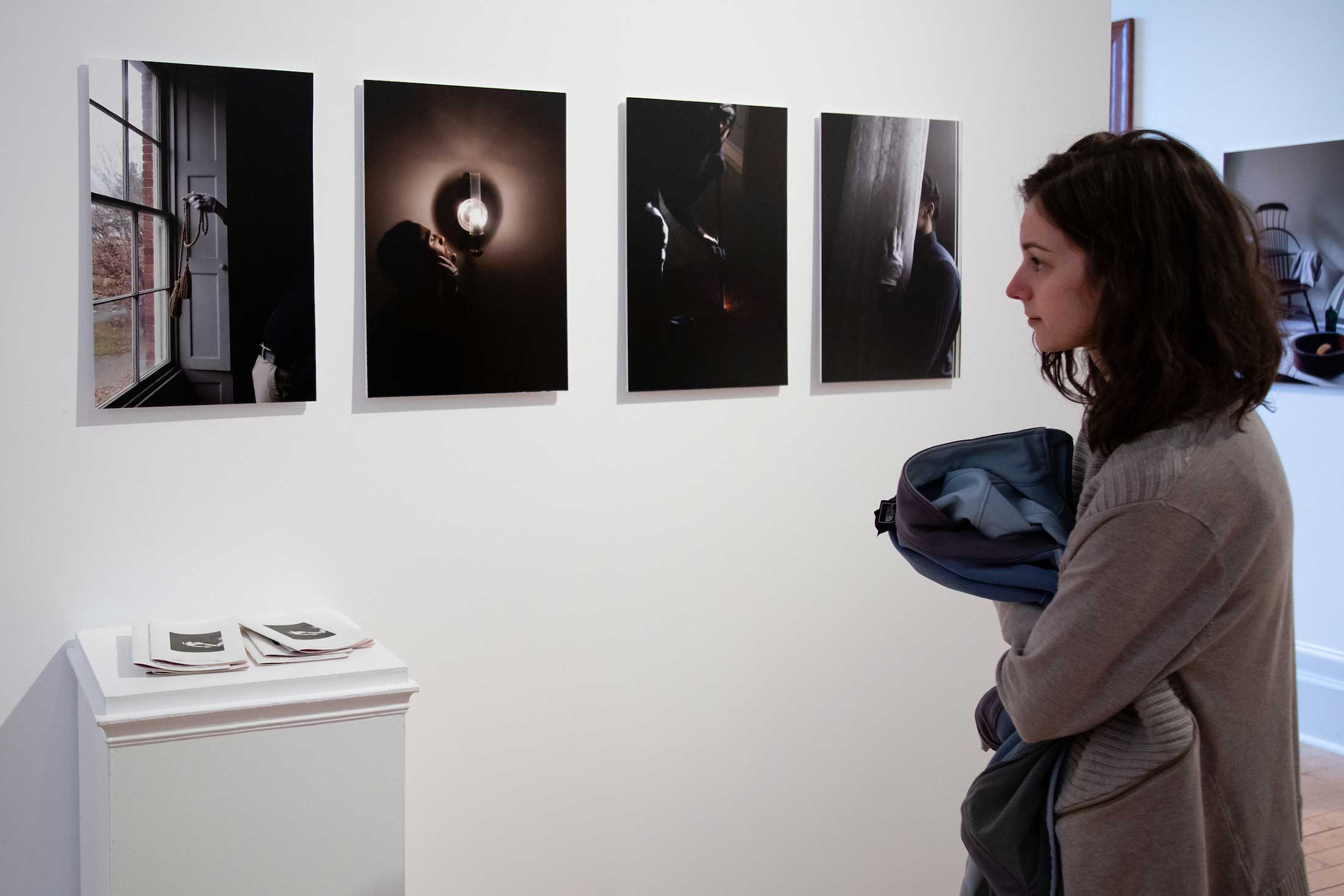
In “The Benefit of Early Rising to Servants,” Jackson’s Interruption I, he imagines Roberts working in the morning: “As I dress and walk the halls to open the shutters, [the light] follows me and speaks to me. … Each morning there is something new that my speaking light shows me. It is our private game.” Images shown here, left to right: “Compass,” “Pondering,” “Speaking Light,” “Calling, Listening.”
Relative, by Joanna Booth ’19
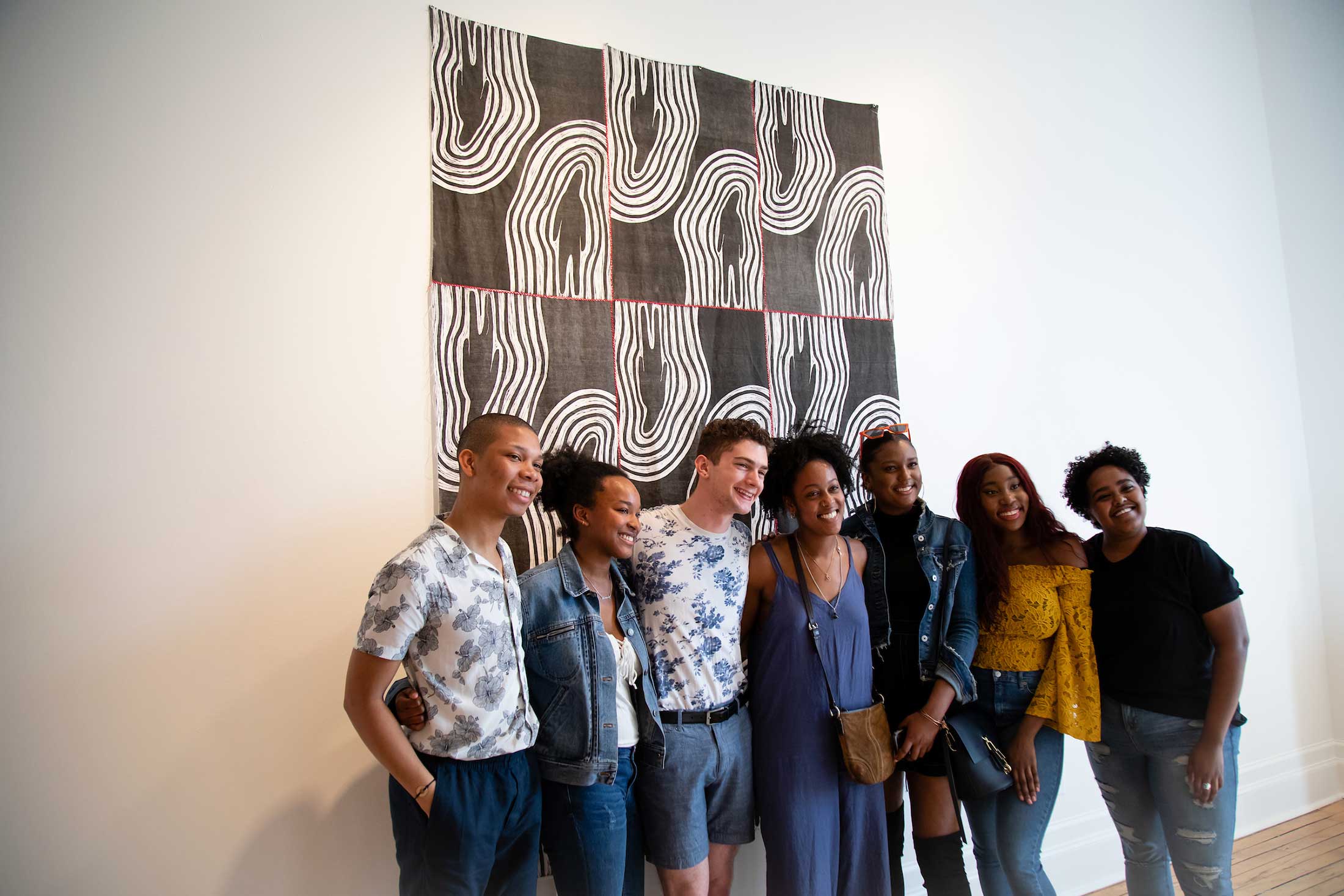
Joanna Booth ’19 (at middle, in blue dress) with friends at the reception. Her exhibit is titled Relative. She began her thesis doing outside research but switched to “a very personal project about familial connections and human ties,” as she wrote in her artist’s statement. Behind her is “Stitched,” relief print on fabric, hand-stitched.
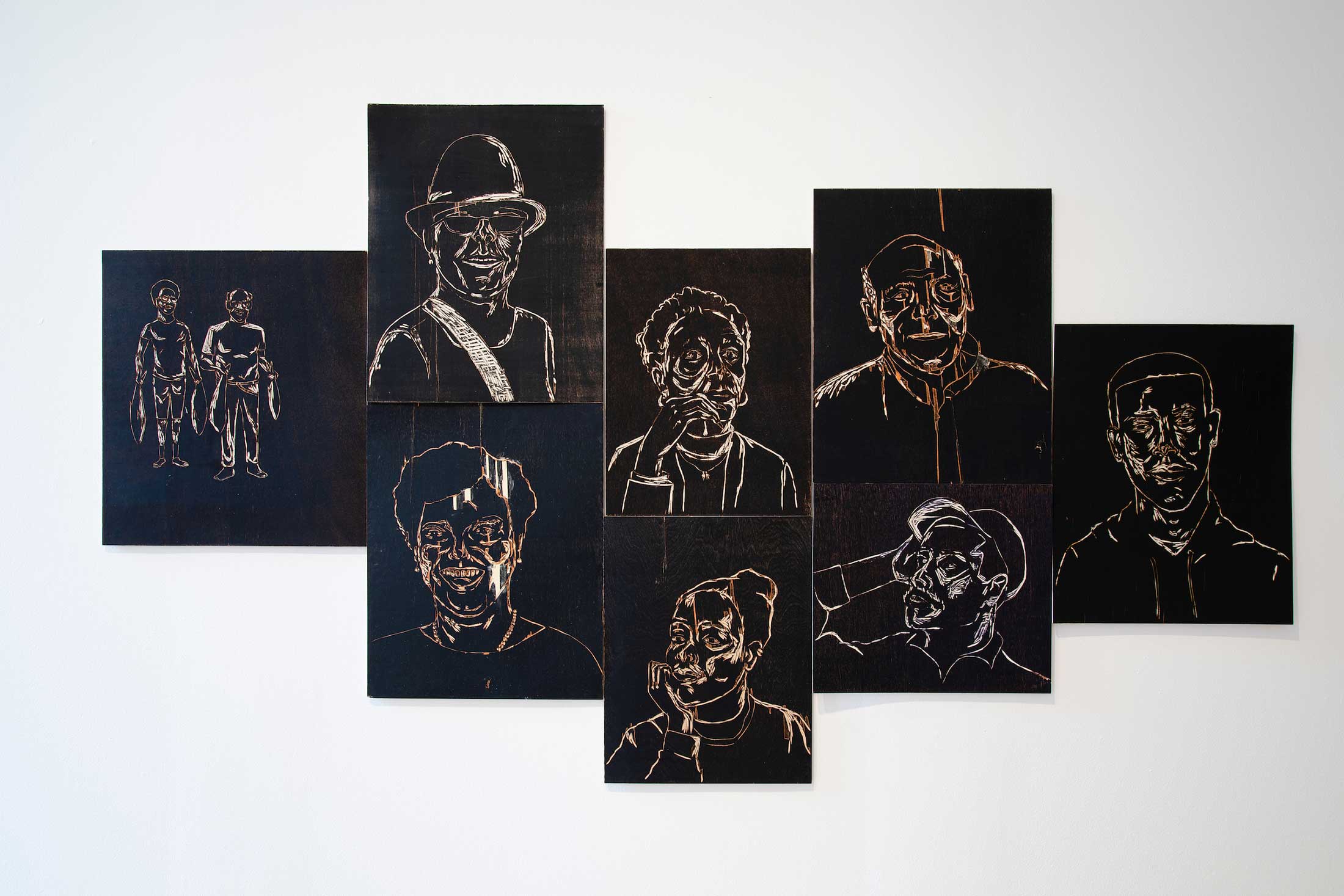
Shown here: “Pieced,” featuring Booth’s woodcut portraits. She writes: “In my thesis, I am studying how my family is partially responsible for how I see and experience interactions, and how these occurrences of interaction have taken place within my family structure.”
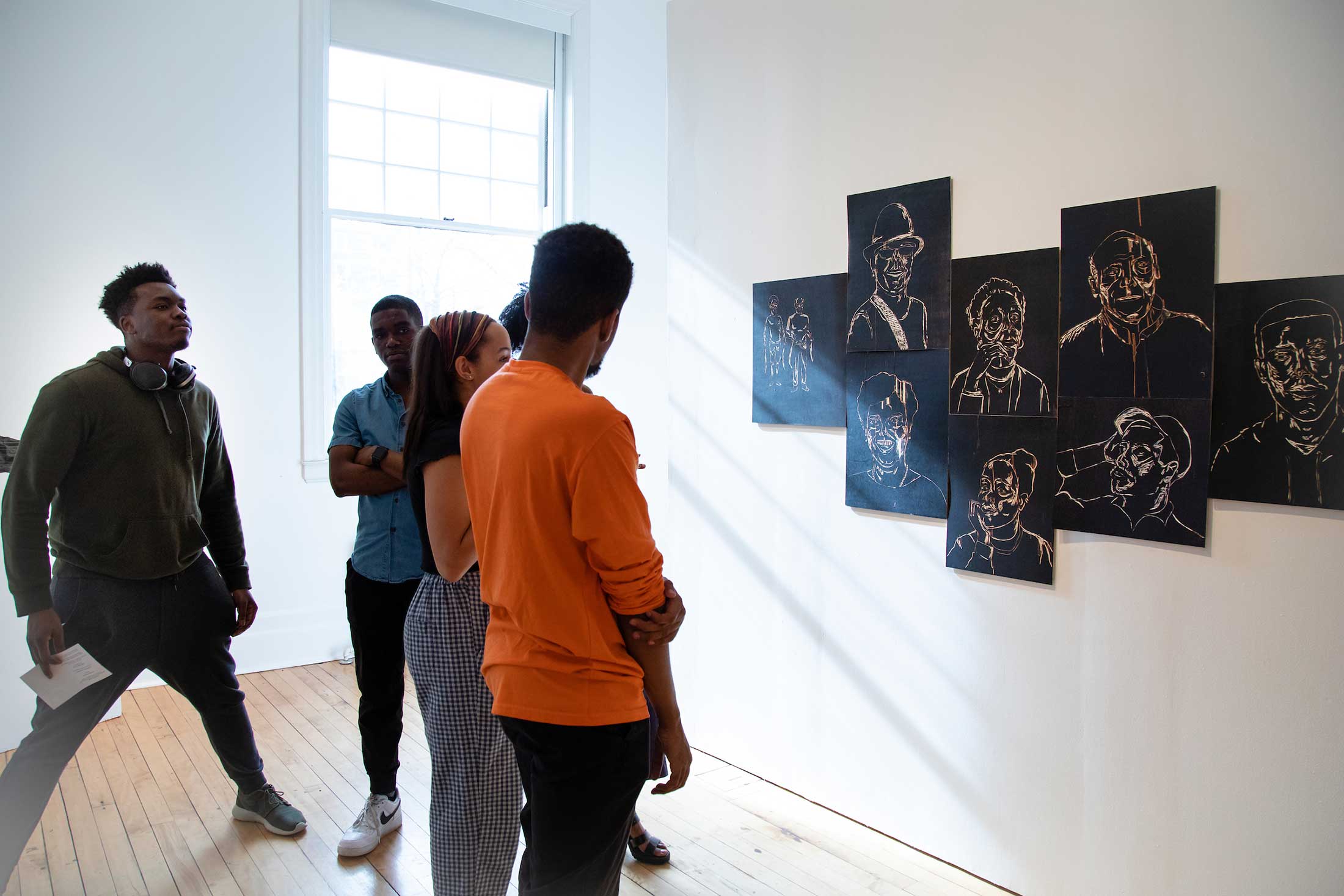
At the reception, visitors lingered over Booth’s “Pieced,” with its black background, chiseled to brownish and whitish underneath. The spring sun casts new light.
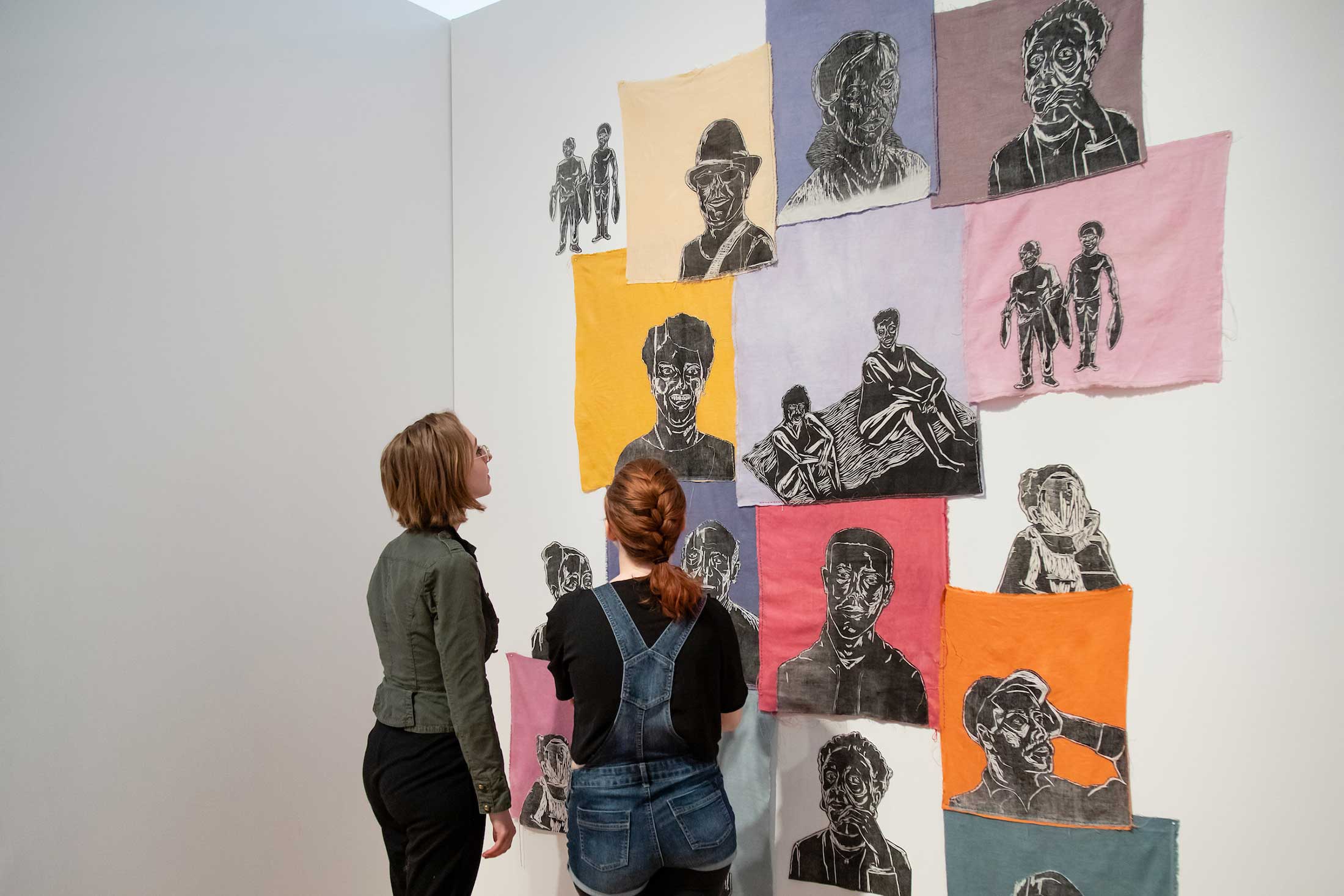
Shown here: “Mended,” relief print on fabric, hand-dyed, hand-stitched. Writes Booth: “I see this as a project that really has no ending as I could continue to research my family’s past and present, and human interactions, for a lifetime.”
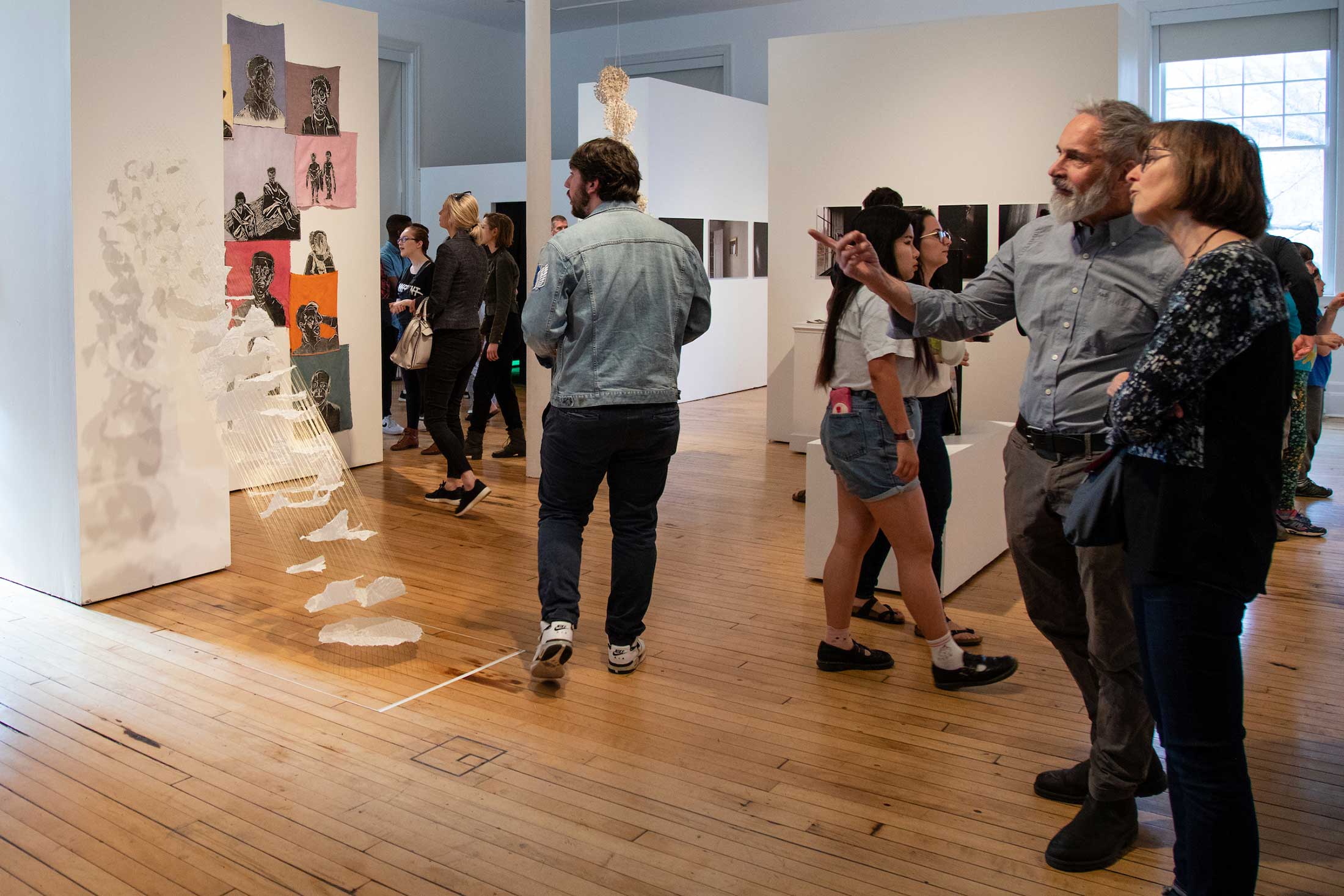
At the opening reception, visitors consider the works of Booth, Jackson and Obayashi, as each artist explores, in turn, powerful ideas of family, history and evanescence.